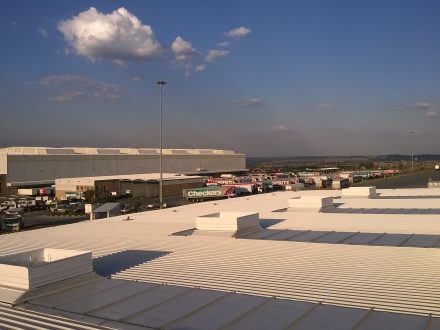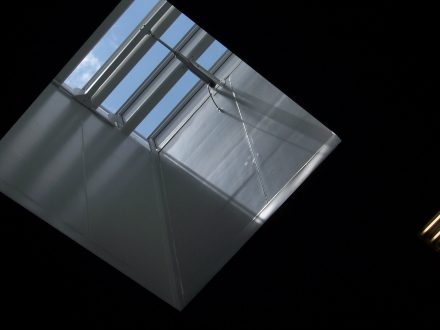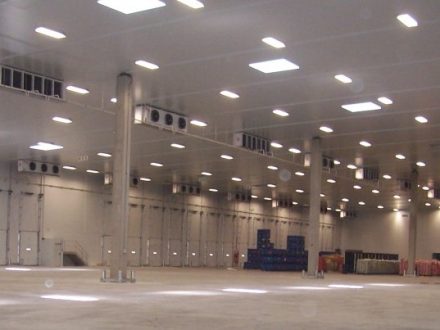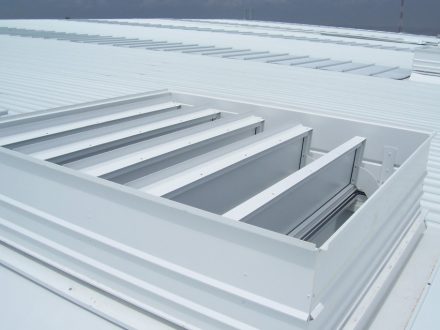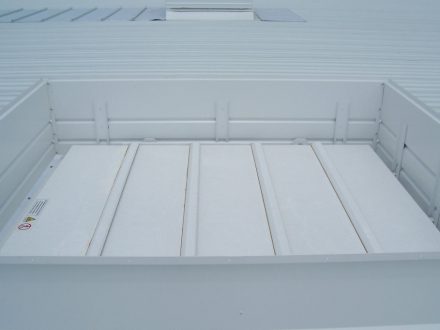Customer satisfied with this solution
1°C area: refrigerated area extended right up to roof sheet level
Quality Power proposed a configuration which surpasses the generally implemented method in South Africa. Normally, insulated ventilators are fitted onto the ceiling, allowing smoke to rise into the ceiling from where it is ventilated outside of the building via controllable louvered ventilators. Jan Eager states: “What is not normal for South African installations is that smoke ventilated from the building is not guided from the refrigerated space through the roof void and then out of the building. At this cold store only one smoke ventilator – type Optima which is rated for large temperature differences – was installed. The refrigerated space is therefore extended right up to the roof sheet level.”
Jan Eager continues: “Compared with previous systems installed, there is a vast difference in customer satisfaction. There is no problem with leaking roof ventilators and associated condensation inside the refrigerated space.”
-28°C area: openings drastically reduced
“Due to the problematic nature of openings through freezer panels and icing problems, smoke vent openings had to be minimized. Through the use of mechanical extraction, openings could be drastically reduced compared with other areas of the building.”
Fans were installed inside shafts of the ceiling void. To minimize heat transfer between the cold area below and the void which can reach temperatures up to 40°C in summer, Duo Therma flap ventilators were fitted onto the ceiling. Eura louvered ventilators were fitted above the fans in order to prevent rain ingress through the roof.
Future buildings: Optima louvered vents with glass blades?
It was remarkable how much daylight entered the building through the thermally broken Optima vents when they were open. Since cold stores are 100% illuminated with artificial lighting, Quality Power investigated the feasibility of installing glass blades in the louvered ventilators since the artificial lighting could be reduced during daylight hours. What would be the heating effect?
Financial value and heating influence
Calculations show that daylight entering the cold store will have a financial effect only if the artificial lighting can be reduced during hours of daylight. But what about the heating effect during daylight? Empirical tests were done to see what effect daylight would have on the temperature inside the building. The results: there was much to be gained by using translucent blades. There was an additional load but that did not outweigh the cost reduction in artificial lighting.


 ES
ES FR
FR DE
DE